A computer monitor serves both as an input and output device, allowing for interaction and data display.
Touch screens allow users to interact with the computer, giving commands and providing data input. The common types of monitors we encounter include Liquid Crystal Displays (LCD) and Cathode Ray Tube (CRT) monitors. These devices vary in their display technology, resolution, response time, and sharper visuals depending on the number of pixels per inch.
In terms of visual output, LCD monitors hold distinct advantages over older CRT monitors. They offer higher resolution, consuming less power and space. Thus, they are the preferred choice for modern computers, including laptops and smartphones.
In terms of hardware devices, a computer monitor essentially is a component of a computer system. It can connect to the computer via various cables such as those used for an input device like a keyboard or an output device like a monitor.
Understanding Monitor Inputs and Outputs
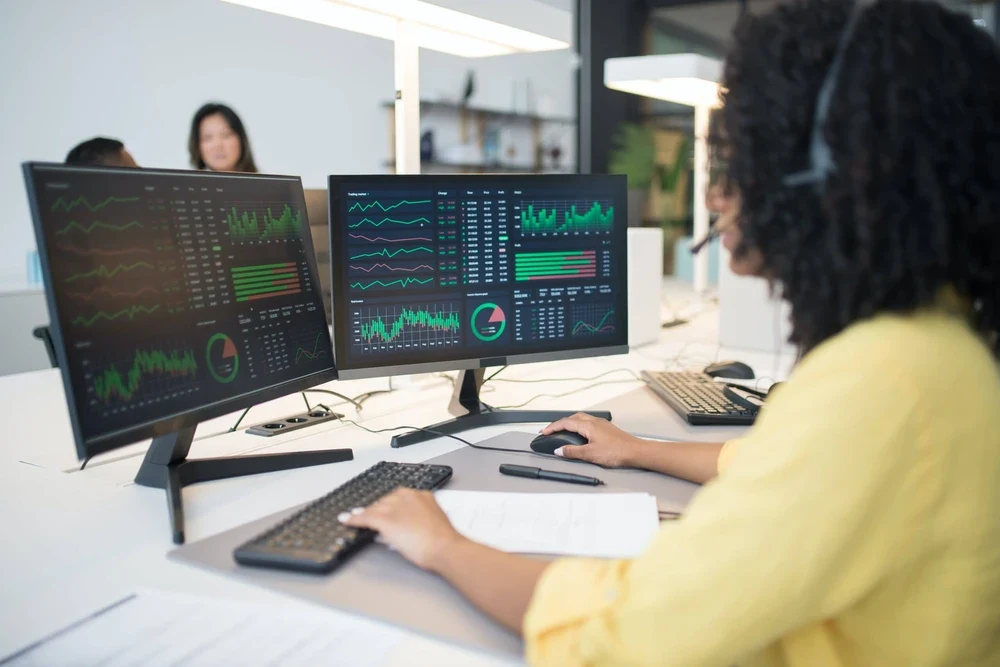
Cathode Ray Tube (CRT) monitors, once a common output device, have largely been replaced by flat screen and touch screen models. LCD monitors offer advantages such as sharper resolution and are generally lighter and more energy-efficient than CRT monitors.
These monitors translate the digital signals from the computer into visual output, displaying the operating system interface, software applications, and media content.
Other output devices such as printers also play a role in the computer system. While printers don’t generate visual displays like monitors, they generate a hard copy of digital data, translating information from the computer into a form of text or image physically printed on paper.
There are also devices that function as both input and output devices, like touchscreens. These innovative pieces of hardware can accept user commands and data, like an input device, but also display information and respond to user interaction like an output device. This dual functionality exemplifies the fluidity of information processing in modern computer systems.
To work efficiently with a modern computer, understanding the functions of common input devices like a keyboard or touch screen and output devices like a monitor is crucial for effective information processing.
The Role of Monitors in Information Processing

LCD monitors are lighter, consume less power, and provide sharper images with higher resolution, making them an essential input and output device in any computer setup. LCD technology’s rapid response time has made it the preferred choice for both casual users and professionals alike. One of the biggest advantages of LCD monitors is the use of pixels to display information.
Pixels, or picture elements, are the basic units of programmable color on a computer screen. The number of pixels determines the monitor’s resolution, and this can typically be adjusted based on the user’s needs. Modern LCD monitors can display millions of colors, which enhances visual output and provides a more immersive user experience.
Touchscreen LCD monitors serve as both an input and output device that allows the user to interact with the computer system directly. These devices provide a new level of interaction by allowing users to input commands and data by simply touching the screen. In many ways, the evolution of the monitor from a simple output device to an integrated input and output device revolutionized how we interact with hardware devices.
Key Points About Monitors and LCD Technology
- Modern monitors are designed to be lighter, consume less power, and provide sharper images with higher resolution than their older counterparts.
- LCD technology is favored due to its rapid response time, making it a preferred choice for both casual users and professionals.
- LCD monitors use pixels to display information, with the number of pixels determining the monitor’s resolution. These monitors can display millions of colors, enhancing visual output and user experience.
- Touchscreen monitors have revolutionized the way we interact with hardware devices, serving as both an input and output device that allows direct interaction with the computer system.
Computer Monitors: Input or Output Devices?
Input and output devices such as touch screens allow users to interact directly with the computer system by touching the screen, giving commands, and entering data, thus facilitating a two-way information exchange that enhances the user experience and improves efficiency.
This interactive nature has made touch screens common input devices on gadgets such as laptops, smartphones, and tablets.
When it comes to hardware devices, the keyboard and mouse remain the most common input devices for a computer. These provide a physical interface that allows the user to enter commands and data into the computer. Each key on a keyboard or movement of the mouse translates into specific input data that the computer’s central processing unit (CPU) can interpret and process. On the other hand, a computer monitor primarily serves as an output device, translating the processed data from the computer’s internal components into visual information that can be seen on the screen. Monitors use different types of display technology, notably liquid crystal displays (LCD) and, cathode ray tubes (CRT), each providing unique advantages in terms of pixel quality and overall performance of the computer monitor.
Hardware Devices: Categorizing Monitors
Even the human eye can perceive a clear difference in display resolution between LCD and CRT monitors. The connection between a computer system and a monitor is facilitated via an array of cables, namely VGA, HDMI, and more, each offering unique advantages in terms of display output.
As an integral component of a computer system, monitors are used to display interface elements, output data such as images, text, and videos, and facilitate interaction with the operating system. They are found in various devices such as laptops, desktop computers, and even smartphones.
The depth of information processing and the splendid visual output they provide place monitors among the most crucial hardware devices in modern computer technology.
When classified as either an input or output device, undeniably, it’s primarily an output device, displaying data from the computer to the user. Nevertheless, certain models such as touch-screen monitors function both ways, behaving as input devices and also as output devices, displaying high-quality display resolution just like LCD and CRT monitors.
Monitors in Computer Systems
- The human eye can perceive a clear difference in display resolution between LCD and CRT monitors.
- Monitors are an integral component of computer systems, used to display interface elements, output data, and facilitate interaction with the operating system.
- Monitors are primarily output devices, displaying data from the computer to the user.
- Some monitors, such as touch-screen monitors, can function both as output and input devices.
Frequently Asked Questions About Monitor Inputs and Outputs
A monitor as an input and output device will require some understanding of how hardware devices like the keyboard, mouse, or scanner interact with the computer system.
For instance, when a key is pressed on a keyboard, a common input device, it sends a signal to the computer’s central processing unit (CPU). The CPU processes this signal and generates an instruction for the display device (i.e., the monitor). The monitor, acting as an output device, then presents this data to the user as visual output.
In this process, the importance of the monitor’s role becomes evident. As the primary output device, the monitor is a critical piece of hardware that takes information processing in a computer to a new level, making it easier for users to interpret and interact with data generated by the computer.
Whether it is a hard copy generated by a printer or a display output presented on an LCD screen, it is all part of the complex workings of a computer system.
Exploring Common Input Devices: Keyboards and Touch Screens

From the simple punch cards of early computing systems to the sophisticated touchscreen on a modern laptop, these common input devices have truly evolved. This is in response to the demands of an ever-evolving operating system and processing unit.
In the early days of computing, the keyboard was the primary tool for receiving user instructions and transmitting them to the main processing component of the computer system. Consisting of multiple keys that represent alphanumeric characters and other commands, the keyboard fosters tangible interaction with the software that controls the computer’s basic operations.
Meanwhile, the introduction of screens that respond to touch added a new dimension to user interactivity. These screens convert a simple stroke into an electric charge that the main processing unit interprets.
This use of technology has revolutionized the interfaces of electronic devices, particularly notable in handheld, wireless devices, and tablets. Unlike keyboards, touchscreens do not have physical keys, providing fluid, dynamic output data that adapts to the requirements of the operating system.
Evolution of Input Devices in Computing
- In the early days of computing, keyboards were the primary tool for input, enabling tangible interaction with the computer’s software.
- Touchscreens, which convert a simple touch into an electric charge for the main processing unit to interpret, have added a new dimension to user interactivity.
- The technology used in touchscreens has revolutionized the interfaces of electronic devices, especially in handheld, wireless devices and tablets.
- Unlike keyboards, touchscreens do not have physical keys, providing fluid, dynamic output data that adapts to the requirements of the operating system.
The Connection between Modern Computers and Monitors
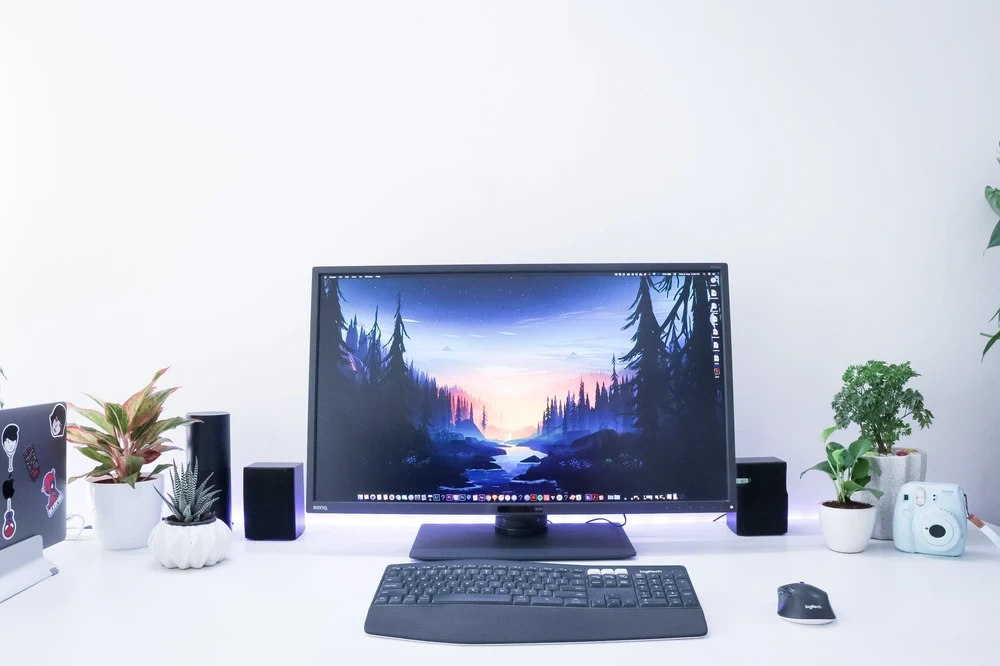
The dual role of hardware devices such as the central processing unit, keyboard and mouse, and the motherboard makes them an integral part of modern computing, ensuring a seamless flow of information between the user and the computer system.
On the output side, monitors offer the visual output of the computer’s processing unit. Whether you’re drafting documents, playing games, or streaming videos, the monitor serves as the primary interface element. It allows the computer to present data visually, translating the zeroes and ones of digital data into images that the human eye can understand.
It’s the computer’s main output device, taking binary data from the CPU, GPU, and other internal components of the computer and converting it into a form of text and image output that we can recognize and interpret.
On the input side, modern monitors are far more than static display devices. Despite these advancements, traditional hardware devices such as the keyboard and mouse still play a crucial role in ensuring accurate input from a computer.
LCD vs CRT Monitors: Input and Output Considerations
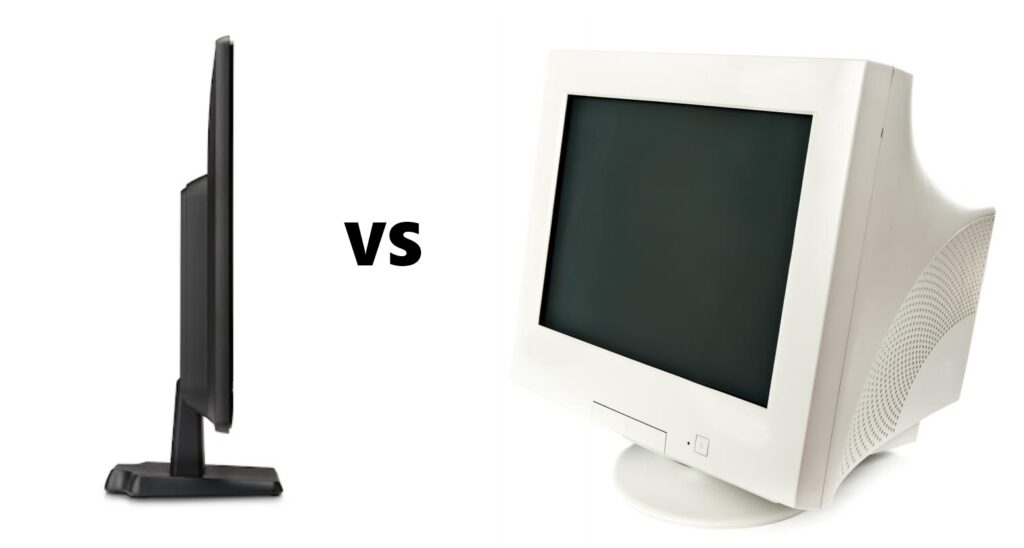
LCDs depend on the central processing unit (CPU) for image processing, making them less efficient in comparison to graphics processing units which allow users to process a larger number of pixels per inch, thus resulting in a sharper image.
Input devices such as the keyboard and mouse allow users to interact with information on the monitor screen. These common input devices send commands and data into the computer, enabling user control.
Touch screens, increasingly common on modern computers, especially laptops and smartphones, serve as both input and output devices. Users input data into the computer system by touching interface elements displayed on the screen.
The main output device in a computer system is the monitor. It is a piece of hardware that displays visual output generated by a computer. The display technologies used in monitors, particularly LCD and CRT, determine the quality of these visual displays.
So whether you’re scrolling through a document, playing a game, or editing a photo, the monitor is your window into your computer’s world. In terms of connection, most LCDs allow users to connect to a computer via VGA for sharper images and optimal graphics.
Computer Display Technologies
- LCDs depend on the CPU for image processing, which makes them less efficient compared to graphics processing units that process a larger number of pixels per inch for a sharper image.
- Input devices like keyboards and mice, as well as touch screens on modern computers, allow users to interact with the information on the monitor screen.
- The monitor, primarily using LCD and CRT display technologies, is the main output device in a computer system, providing visual output generated by the computer.
- Most LCDs allow users to connect to a computer via VGA for sharper images and optimal graphics.
Display Resolution: Pixels and Monitor Outputs
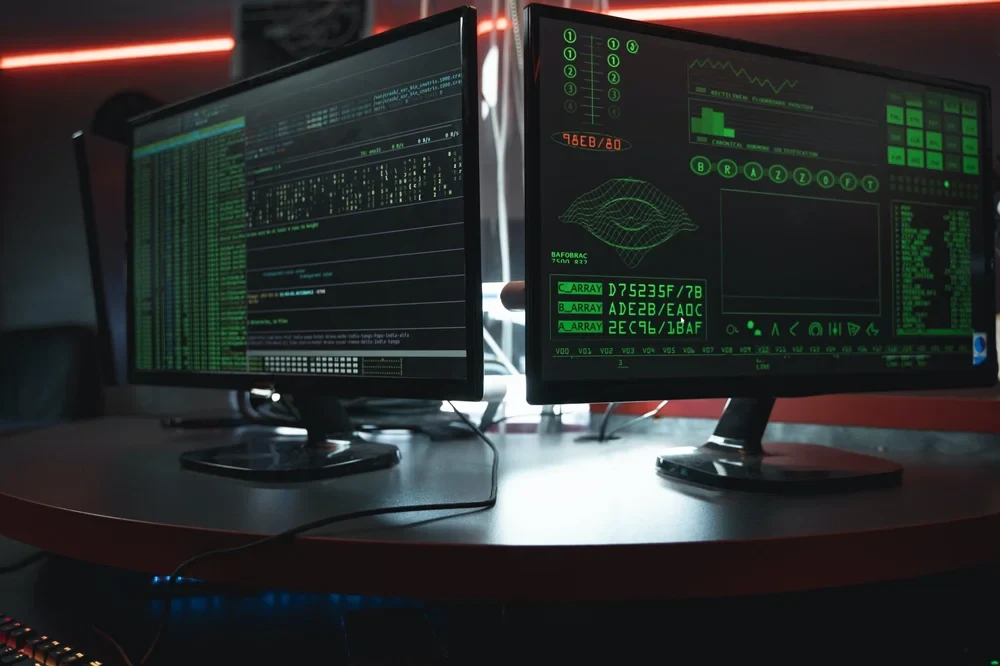
The display output quality of LCD (Liquid Crystal Display) monitors is generally sharper than that of CRT (Cathode Ray Tube) monitors. This is due to the simple fact that LCDs allow for a greater number of pixels per inch, providing a clearer and more detailed visual display.
Advantages of LCD technology over CRT include an improved response time, the ability to display high-resolution images, energy efficiency, and a slimmer design.
Yet, both LCD and CRT monitors serve as an important output device that displays information generated by a computer. This information is usually in the form of text, images, or videos, thus making the monitor the primary output device of a computer system. Consequently, understanding our display devices such as laptops, smartphones, and desktop computers allows us to better appreciate the finer details of the response time and visual display of modern computer systems.
Advantages of LCD Technology in Modern Monitors
LCD monitors are the main output device that displays information to the user, allowing them to interact through commands and data. LCD technology’s efficiency is further enhanced when used with another essential piece of hardware – the graphics processing unit – which ensures seamless visual data processing.
In addition to the visual content, LCD screens also serve as an interface between the operator and the computer system, thus functioning as both an output and input device. This role is especially significant in touchscreen monitors where users can directly interact with display elements, eliminating the need for auxiliary input devices like a mouse or keyboard.
Among the benefits of LCD monitors are their sharper image quality and higher display resolution compared to earlier CRT monitors. This advantage stems from the more significant number of pixels that LCDs can support in both horizontal and vertical directions, resulting in more detailed and defined images.
Despite the technological strides made by LCD monitors, it is essential to remember that they are just one component of a computer system. A computer, serving as the main output device that displays information, provides an interactive monitor screen for users to effectively process commands and data.
LCD Monitors and Computer Systems
- LCD monitors serve as both an output and input device, enhancing user interaction with the computer system.
- The efficiency of LCD technology is boosted when used with a graphics processing unit, allowing for smooth visual data processing.
- LCD monitors provide sharper image quality and higher display resolution than earlier CRT monitors due to their ability to support a greater number of pixels.
- Despite their advancements, LCD monitors are only one component of a computer system, with the computer itself acting as the main output device.
Understanding Computer System Interfaces: Input and Output
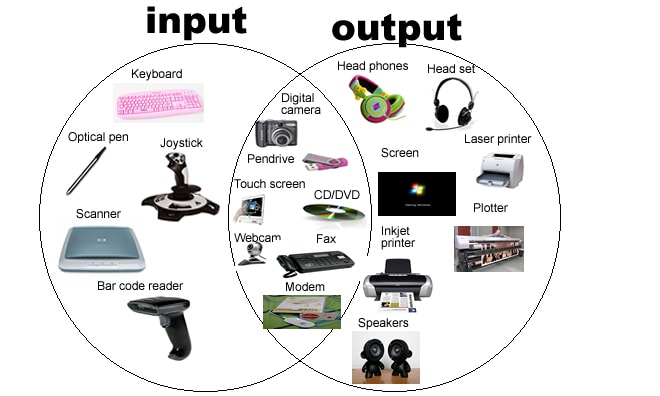
As we delve into the world of computer system interfaces, we cannot ignore the diverse range of devices that facilitate communication between the user and the machine. These devices can be divided into two categories, namely input and output devices. They convert human actions into a language understood by the internal components of the computer system and present the data in an understandable format to the user.
Consider a standard workflow on any modern computer. It starts with the user inputting commands via a device, such as a keyboard. This allows the user to interact with data inside the computer. The central processing unit (CPU) then processes this data, and in the end, the information is rendered as tangible output through devices like printers or monitor screens.
The transformation of these devices over time has been truly extraordinary. For example, consider the transition from CRT monitors to LCD monitors, this advancement in technology turned monitors into the primary output device and showcased significant advantages such as lower power consumption and sharper image quality.
Computer Monitor as the Main Output Device
Pixels used to provide display resolution are critical in both LCD and CRT monitors, enhancing the clarity of text and images on our desktop computers. This digital information processing forms the bedrock of the modern computer system, enabling user interaction and enhancing productivity.
The monitor, as an output device, plays an integral part in this hardware ecosystem. It not only displays output data but also forms a key component of the computer interface elements. Input and output devices have revolutionized the way we interact with electronics.
Default input devices include keyboards, mice, and touch screens, among others. They allow users to interact with the computer system, enabling commands and data inputs. On the other hand, output devices like printers and monitors provide a tangible or visual output from processed data.
For instance, printers generate a hard copy as output, while monitors produce a visual output on-screen. While the monitor is a standard output device, new advancements have transformed display technology, introducing higher display resolution and reshaping the form of text on desktop computers.







